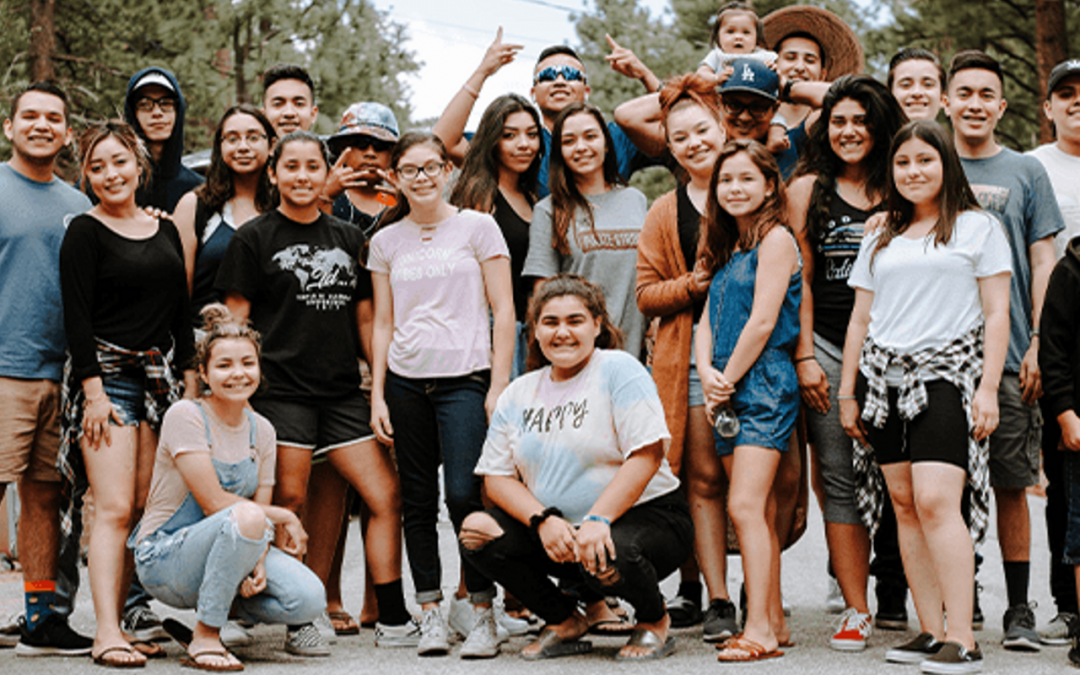The South Chicago Neighborhood Network uses the Collective Impact model to build a “trauma-informed” community. Often in community development work, too many organizations are working in isolation from one another, reducing the collective power of resources and networks. Can the collective impact model provide a structured way to bring people and organizations together to achieve social change?
In this episode, we talk with the Coordinator of the South Chicago Neighborhood Network about how collective impact works on the ground in community development.
Often in community development work, too many organizations are working in isolation from one another. According to the Collective Impact Forum, collective impact brings people together in a structured way to achieve social change.
READ MORE
Collective impact:
- Starts with a common agenda (coming together to collectively define the problem and create a shared vision to solve it;
- Establishes shared measurement (agreeing to track progress, in the same way, allowing for continuous improvement;
- Fosters mutually reinforcing activities (coordinating collective efforts to maximize the end results); and
- Encourages continuous communication (building trust and relationships among all participants)
It also has a strong backbone – such as a team dedicated to orchestrating the work of the group.
With principles of practice that places a priority on equity, uses data to continuously learn, adapt and improve and includes community members and cross-sector partners, the collective impact model has become a “best practice model” for philanthropy and strategic grantmaking at the community-level.
In this two-part episode, I’ll be exploring the efficacy of the collective impact model from two perspectives: Philanthropy and Community Development.
Today I’m talking with Tevonne Ellis (of Claretian Associates), who is the Network Coordinator for the South Chicago Neighborhood Network. The South Chicago Neighborhood Network is one of the 10 funded neighborhood networks of United Way of Metro Chicago. The Network uses the collective impact model, to support the common agenda of creating a trauma-informed community by 2020 and is comprised of over 22 South Chicago community civic and non-profit organizations, leaders, businesses and health partners.
Tevonne and her team convene Network members monthly to review ongoing activities, assess effectiveness, and determine next steps. The work is led by and coordinated through Committees, and the Committee Chairs convene members and key partners to deploy the planned activities and programs.
QUESTIONS & ANSWERS
How does the SCNN engage the Collective Impact model to support the creation of a trauma-informed community in South Chicago?
Our goal is to engage youth, between the age of 8-26, to reduce violence in the community. Each of these organizations has a strength to help us engage young people, in particular, around violence.
How has your funder, United Way of Metro Chicago, guide and support the network in utilizing the collective impact model?
Our funder provides us with a community engagement officer so they’re basically the boots on the ground in the community from the funder’s office. Really helping, directing and guiding the collective impact process. They were there to help us create our common agenda, our three-year plan as well as looking at our goals and indicators on how we’re meeting our goals in the plan.
Also, to help us build capacity. They provide an evaluator to look at the concept of the indicators of our plan. I think there is a struggle, I think trauma is a really hard concept to measure so we kind of struggle around data collection and tracking and evaluation.
What, in your opinion are the strengths and challenges of utilizing the collective impact model in the Network’s effort to create a trauma-informed community?
One of the challenges is keeping network members engaged and at the table. Another challenge is looking at the topic in which you are approaching. This is a relatively new concept, what is trauma-informed? What does it look like?
It’s just a really broad topic and I think we struggle with focusing it and really looking at how we can create an impact in using the collective impact model. Rally kind of showing that bc we created a trauma-informed neighborhood, we reduce violence.
Strength is when you show funders as well as other key partners, that if you’re working collectively to move the needle it’s always powerful to show in numbers vs one organization. Also, I think it creates a movement when you have more than one person at the table around trauma-informed. When one organization hears about it, you start to hear other people talking about it as well.
Being intentional about making sure we are meeting the needs of collective impact. Common goal, common agenda, having a lead agency and making sure that we are collecting data are some of the key pillars.
The common goal and the common agenda are always at the head of the conversation. Collective Impact can make a shift and you have to revisit the common agenda and the common goal to make sure everyone is still invested in the key themes.
What would you share with funders who embrace this model for community-level work?
People are at different levels of the collective impact model. They may have common goals or common agenda but are they really making an impact in unison. Are you just looking for collaborative work or are you looking at unison where all organizations are working together to make an impact?
I think you have to be really clear on what you’re looking for when you’re looking at collective impact work.
Starting from scratch is a very difficult challenge. You have to educate your potential funder what collective impact means to you. It has different definitions for different funders.



